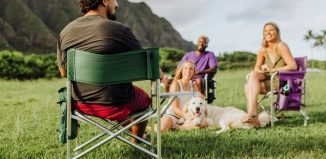Army clothes have many purposes besides mere distinguishing between soldiers, sailors and civilians. The psychological implications of military uniforms, like the importance of style, appearance, colour, insignia and decorations, all contribute to the closeness, discipline, camaraderie and spirit of the troops.
Additionally features contribute to formal patriotic displays while others relate to practicality, functionality, utility, comfort and bodily protection. Clearly, the working conditions are quite different from an office with an ergonomic workstation and suitable uniforms are essential to a soldiers performance.
Consider the Design and Fabrics

Textiles for military clothing need to overcome a lot of challenges. They must provide protection, durability, and comfort in a wide range of hostile environments. The aim is to use breathable, light and protective military clothes that don’t settle when it comes to comfort and operational ability.
Soldiers endure high levels of physical activity in a plethora of environments. Thus, army clothing should provide protection in the operational environment and its impacts while dissipating heat and moisture. Clearly, army pants are built to be much more resistant than even the best work pants out there. In addition, the fit of army clothes in conjunction with the head protection systems like helmets are also crucial for successful military missions.
Next, choosing the right material is pivotal. The most common and appropriate 2 options for military clothes are 100% cotton fibres or cotton/polyester blends. The use of 100% cotton fibres provides a natural feel and good absorption characteristics while the use of cotton/polyester blend can provide a combination of comfort and strength characteristics due to the high strength of polyester fibres.
However, the optimal design of military clothing does not only have to focus on high performance but also on product value and manufacturing cost. The most economical options are 100% cotton or cotton/polyester blends that can be manufactured using conventional spinning techniques. Alternatively, a core/sheath yarn with a 100% polyester fibre core and a 100% cotton fibre sheath can cover all the needs of a soldier.

Many wonder how heavy is a military uniform. Denier is a unit of density determined by the length and weight of yarn or fibre. The higher the denier, the thicker the clothes. Fibre tenacity, on the other hand, is the fibre’s strength determined by the force needed to break the fibres divided by the deniers.
Typical values of cotton fibre tenacity may range from 2.7 to 4.0 g/denier in dry conditions and 3.5 to 5.5 g/denier in wet conditions while the tenacity of polyester fibres in both dry and wet conditions are 2.8 to 7.0 g/denier. Cotton stiffness, measured by flexural rigidity, ranges from 60 to 70 g/denier while polyester stiffness is 12 to 17 g/denier.
Style Is Important Too
Military uniforms are further divided into conventional ones and special operations army clothes. Believe it or not, fashion is a part of war and not just for photographs and sentimental reasons. Army clothes are also intended to be symbols of power and victory. Thus, every country tries to express or gain their own in a unique way. An American aviator, United States Marine and the Navy’s old “blueberries” all differ. While the Scottish kilt is a category of its own. The Spanish Foreign Legion’s style is quite different from the Swiss guard’s.
In Australia, the new Commonwealth army uniform was introduced in 1903 and incorporated individual regiment colours, new badges and buttons to distinguish regiments and corps. The slouch hat was included as headgear, although the slouched hat was included as standard headgear, khaki replaced the colourful uniforms of the colonial forces.

In the end, it will depend on your tastes, sense of style and probably patriotism. Modern-day manufacturers and brands, however, aim to provide high quality and comfortable apparel for any individual part of military, police and security organisation.
In fact, there are shops featuring both their own products and famous brands, ranging anywhere from everyday wear to field gear. Not only can you buy army clothes but also gear up on packs, uniform boots, duty gear, torch flashlights, hydration bags, gloves, riot protective equipment, eyewear, watches, vehicle and training fire and rescue gear, body armour or crime scene investigation products.












